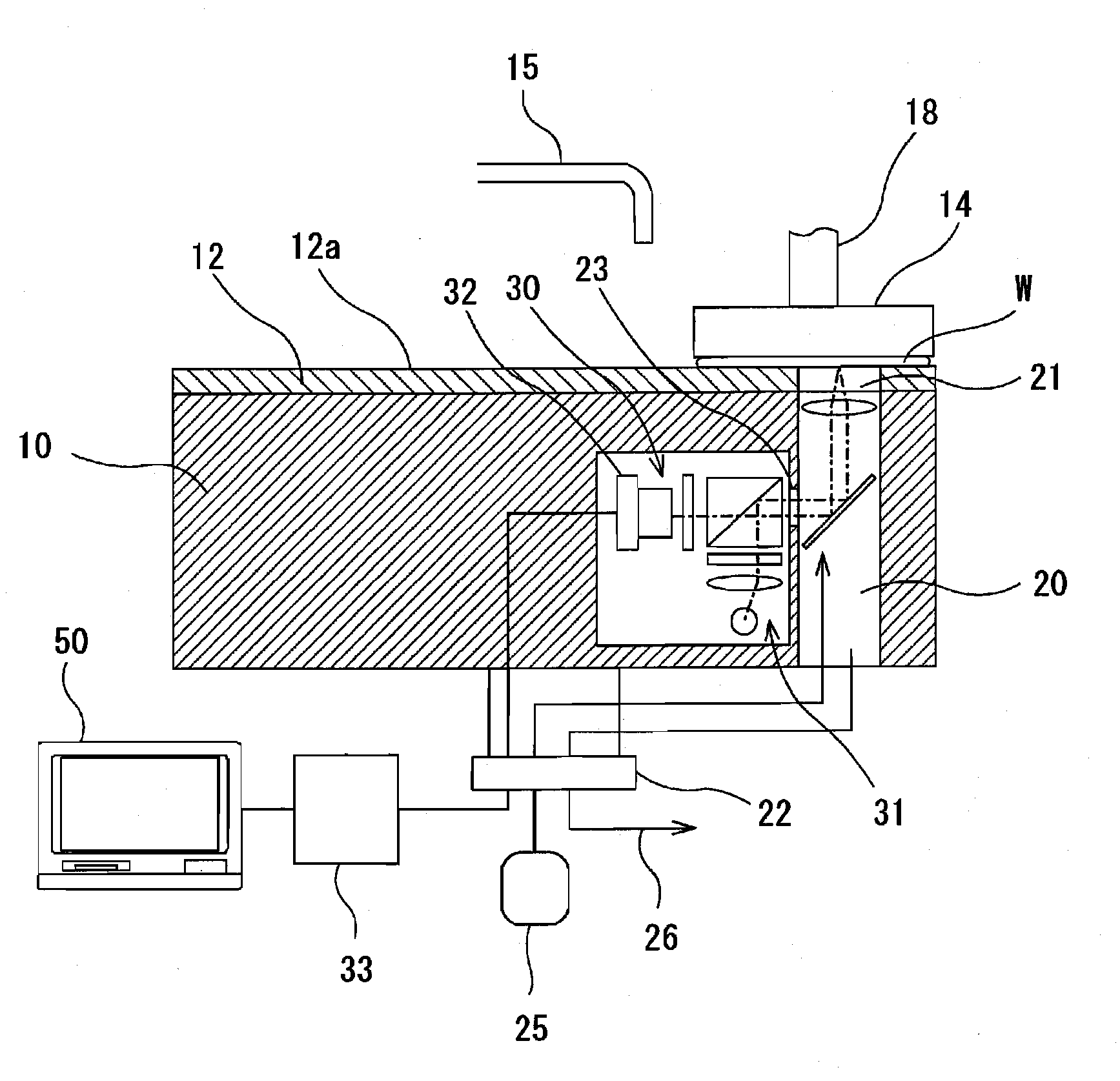Polishing end point detection method, polishing end point detection apparatus and polishing apparatus
a detection method and polishing technology, applied in the direction of optical radiation measurement, lapping machines, instruments, etc., can solve the problems of preventing the accurate detection of unable to receive reflected laser light, and difficult to detect the polishing end point from the change in interference color, etc., to achieve accurate detection, fast detection, and bright and saturation of the surface
- Summary
- Abstract
- Description
- Claims
- Application Information
AI Technical Summary
Benefits of technology
Problems solved by technology
Method used
Image
Examples
Embodiment Construction
[0068]Embodiments of the present invention will be described below with reference to the drawings.
[0069]The principle of the present invention will now be described with reference to FIG. 2. When a light is incident on an interface between two substances having different indexes of refraction, p-polarized light is not reflected from the interface at a particular angle of incidence. This angle of incidence is called Brewster's angle, which is given by a known formula using the indexes of refraction of the two substances. FIG. 3 is a graph illustrating a reflectance of p-polarized light and a reflectance of s-polarized light that vary depending on the angle of incidence. As shown in FIG. 3, Brewster's angle given by indexes of refraction of air and SiO2 is 55.4 degrees, and Brewster's angle given by indexes of refraction of air and SiN is 63.4 degrees.
[0070]In FIG. 2, when the light is incident on the interface at an angle near the Brewster's angle θ, the reflected light is mainly com...
PUM
 Login to View More
Login to View More Abstract
Description
Claims
Application Information
 Login to View More
Login to View More - R&D
- Intellectual Property
- Life Sciences
- Materials
- Tech Scout
- Unparalleled Data Quality
- Higher Quality Content
- 60% Fewer Hallucinations
Browse by: Latest US Patents, China's latest patents, Technical Efficacy Thesaurus, Application Domain, Technology Topic, Popular Technical Reports.
© 2025 PatSnap. All rights reserved.Legal|Privacy policy|Modern Slavery Act Transparency Statement|Sitemap|About US| Contact US: help@patsnap.com



